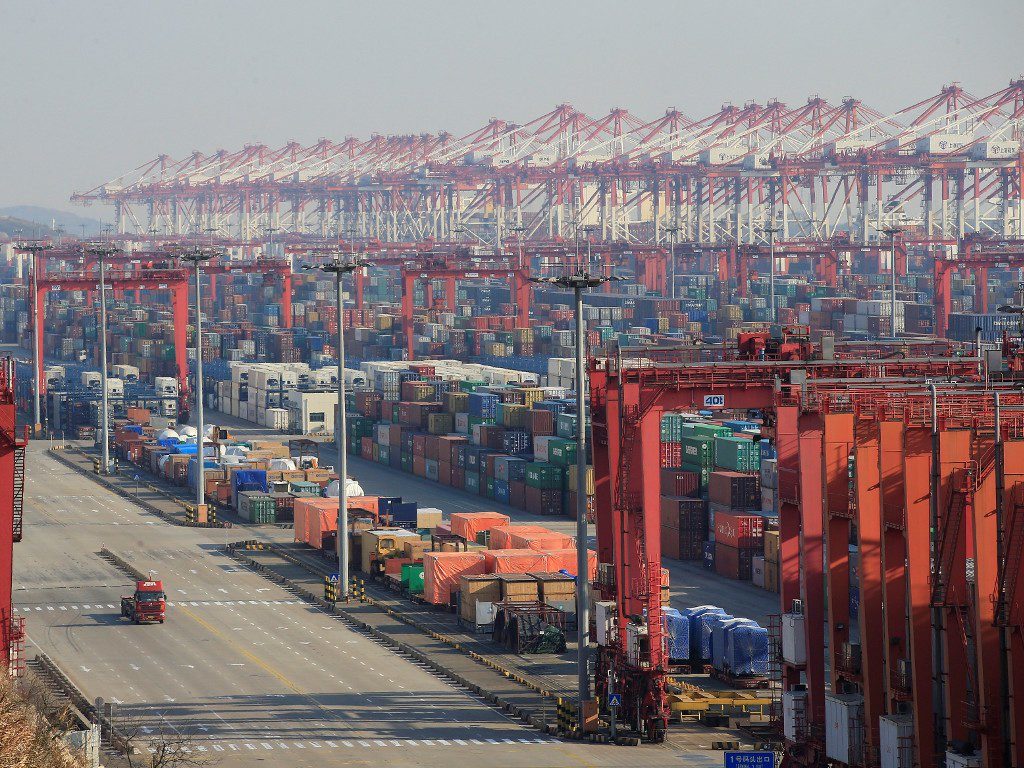By Ifty Islam
Published in Dhaka Tribune on January 07, 2018

Photo: Reuters/ Dhaka Tribune
BRI can be a mutually beneficial partnership between Bangladesh and China
The Chinese Communist Party’s (CCP) amendment of its constitution to include a charter pledging to “pursue the Belt and Road initiative (BRI),”approved at the close of its recent twice-a-decade 19th Party Congress, underlines the importance of BRI for President Xi Jinping personally and his growing desire for China to take a global leadership role.
It can also be argued that the increasingly inward-looking United States, under President Trump, has left a global leadership vacuum that China’s President Xi Jinping has been keen to fill. And BRI will be instrumental in that respect.
So what is BRI, how is it expected to evolve, and how best should Bangladesh engage?
In October 2017, two of China’s leading think-tanks — the China Institutes of Contemporary International Relations (CICIR) and Anbound, — hosted a delegation of three leading Bangladesh think-tanks led by Ambassador Farooq Sobhan — Bangladesh Enterprise Institute (BEI), the Policy Research Institute (PRI), and Bangladesh Institute International Strategic Studies (BIISS) – along with the Chief Economist of Bangladesh, the BGMEA, as well as this author.
The two days of seminars gave the participants time to explore the BRI concept and the future of China-Bangladesh relations.
But before discussing BRI with respect to Bangladesh, it is worth giving some background to the project.
A bit of background
BRI was officially launched in September 2013 when President Xi used a speech at a university in Kazakhstan to call for the creation of a “Silk Road Economic Belt.” The project was later expanded and re-branded with its current name.
The Belt and Road initiative has two main prongs: One is called the “Silk Road Economic Belt” (the belt) and the other the “21st Century Maritime Silk Road” (the road) (see chart below).
The economic importance of BRI for China is driven by the transition phase it is currently going through. With the economy slowing from the 10% GDP growth rate seen for the past three decades to a “New Normal” of 6-7%, there is an imperative to move away from domestic infrastructure and traditional Western export markets and open up and create new markets for Chinese goods and technology.
One might also argue that China will benefit from exporting excess cement and steel capacity by shifting factories overseas to less developed countries.
Beijing also hopes Xi’s initiative will help boost the economies of less developed border regions such as Xinjiang by linking them with neighbouring countries.
But many believe that BRI is also a geopolitical initiative to boost China’s regional importance at a time when Donald Trump’s US looks to be stepping back from Asia.
BRI and Bangladesh
So what does BRI mean for Bangladesh?
Well the immediate focus has been large scale infrastructure investment that was catalysed by the historic visit of Chinese president Xi Jinping to Bangladesh in October 2016 when he committed to $40 billion of investment and aid.
Of the 27 agreements on development, collaboration, and financial assistance/loans, highlights included Karnaphuli Multi-Lane Tunnel project in Chittagong, the Confucius Institute at Dhaka University, and the Tier-4 National Data Centre in Gazipur’s Kaliakoir, Shahjalal Fertiliser Company Limited in Fenchuganj, a 1320 megawatt thermal power plant in Patuakhali’s Payra and a 1320 MW coal-fired power plant in Chittagong’s Banshkhali.
Memoranda of Understanding (MoUs) were also signed for cooperation, maritime cooperation, joint feasibility study on a free-trade area, new ICT framework, counter-terrorism collaboration, capacity building and sharing of information, tackling climate change risks, regional and international cooperation, and cooperation on power and energy sectors.
But Bangladesh should see BRI as offering much more opportunity than just tackling our infrastructure deficit, important though that is.
An excellent reference and resource for seeing the larger opportunities is to look at the “Visions and Actions” white paper published by the Chinese government in 2015. It makes clear that BRI was always intended to be a broader vision from the outset, and not simply an infrastructure connectivity program.
The report highlights five “pillars” of BRI: 1) Policy Coordination; 2) Facilities Connectivity; 3) Unimpeded Trade; 4) Financial Integration; and 5) People-to-People Bonds.
BRI regional connectivity for Bangladesh is focused on an extension of the BCIM (Bangladesh, China, India, Myanmar) economic corridor, or what began as the Kunming initiative, proposed by Professor Rehman Sobhan as far back as 1999.
However, the Indian opposition to BRI has been evident with suspicions about the geopolitical ambitions of China in South Asia, as well as sensitivity about CPEC (China Pakistan Economic Corridor) running through disputed Kashmir.
More recently, the Rohingya crisis has soured Bangladesh-Myanmar relations, posing another problem for the initiative, particularly for physical connectivity, since Bangladesh does not share a common border with China and hence is reliant on transit via either India or Myanmar.
Hopefully, over time, India will find that the economic benefits of better relations with China — given that the latter will soon become the largest economy in the world – outweighs other considerations.
Similarly, Myanmar’s economic progress will be reliant on greater global integration, which only seems possible once a solution to the Rohingya crisis that is acceptable to both countries, and the refugees themselves, is found.
However, looking at pillars 3) and 4) of the “Visions and Actions” China White paper, I believe we should accelerate the development of a “Twin Trade and Financial Corridor “between Bangladesh and China.
Regarding trade, while China has become our largest trading partner accounting for 26% of imports, we also have a $10.9 bn trade deficit with them.
The imbalance is somewhat exaggerated by the fact that imports from China are dominated by industrial machinery and raw materials needed for Bangladesh’s RMG export sector, which has grown to be the second largest in the world.
Nonetheless there remains substantial scope for expanding our exports to China itself, which is already the largest consumer sector in Asia.
Leveraging BRI
The rapid growth of the spending power in China offers a significant opportunity for Chinese companies to invest here. With the development of dedicated economic zones, Bangladesh is becoming an attractive investment destination as a low-cost re-export hub to the huge Chinese domestic market as well as to neighbouring India and ASEAN countries, and with duty free access to the EU.
A second major opportunity is to establish a financial corridor. Physical infrastructure is key but financial sector and capital markets infrastructure development is also important.
In this context, it is worth noting that China now has the second largest equity and third largest bond markets in the world. The Shanghai and Shenzhen stock exchanges have a combined market capitalisation of around $8 trillion and more than 100 million retail investors.
So beyond FDI, Bangladesh can benefit in the future under BRI from greater financial integration that may see more Chinese portfolio investment in the Bangladesh stock market.
At the moment, China’s capital account is not fully liberalised, so retail investors there cannot invest in Bangladesh directly. But there is scope through the Stock Connect link to Hong Kong listed funds and thereby to Bangladesh.
Secondly, Chinese exchanges have developed a unique venture capital (VC) ecosystem to encourage innovation and risk capital access to technology firms. They are then encouraged to issue IPO and list on the exchanges.
This model could be introduced to Bangladesh and support the government’s target of $5bn in ICT exports.
Note that in 2017, Chinese E-commerce firm Alibaba and social media/messaging giant Tencent were worth more than their US counterparts Amazon and Facebook.
Another major opportunity is for China-Bangladesh joint venture companies in infrastructure, as well as technology, to have dual listings on both Chinese and Bangladeshi stock exchanges. They could even issue RMB-denominated Panda Bonds to access the huge pool of Chinese liquidity to finance Bangladeshi investment projects.
In conclusion, BRI offers major opportunities beyond being a source of large-scale infrastructure finance. Further engagement by the respective governments, private sector players, and think-tanks is needed to develop more fully the concept of the China-Bangladesh twin trade and finance corridors as a key component of BRI.
Ifty Islam is chairman, Asian Tiger Capital Partners.
 CPD RMG Study Stitching a better future for Bangladesh
CPD RMG Study Stitching a better future for Bangladesh




